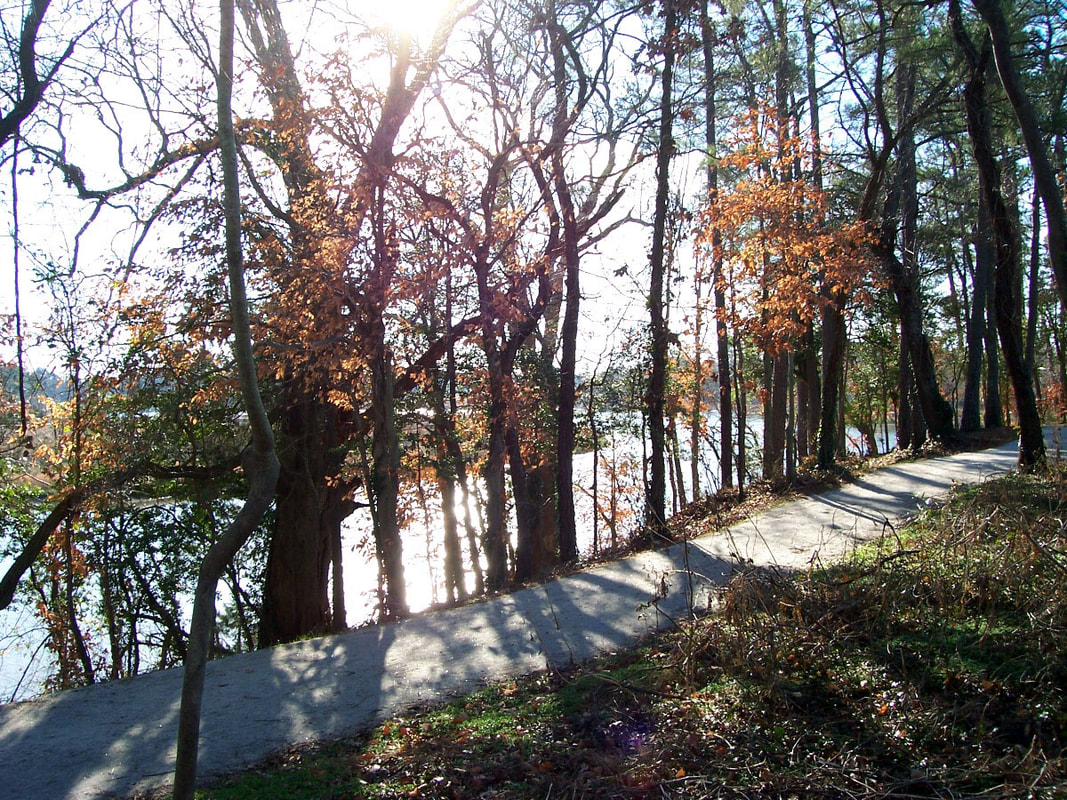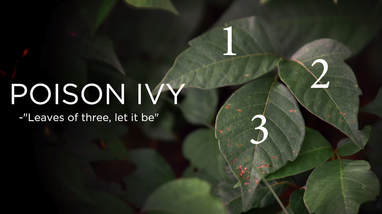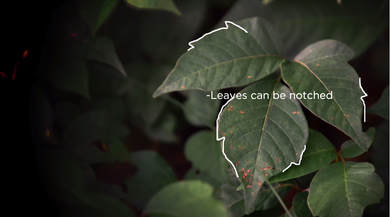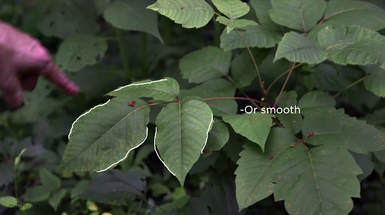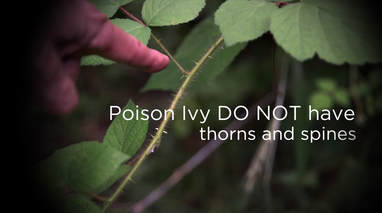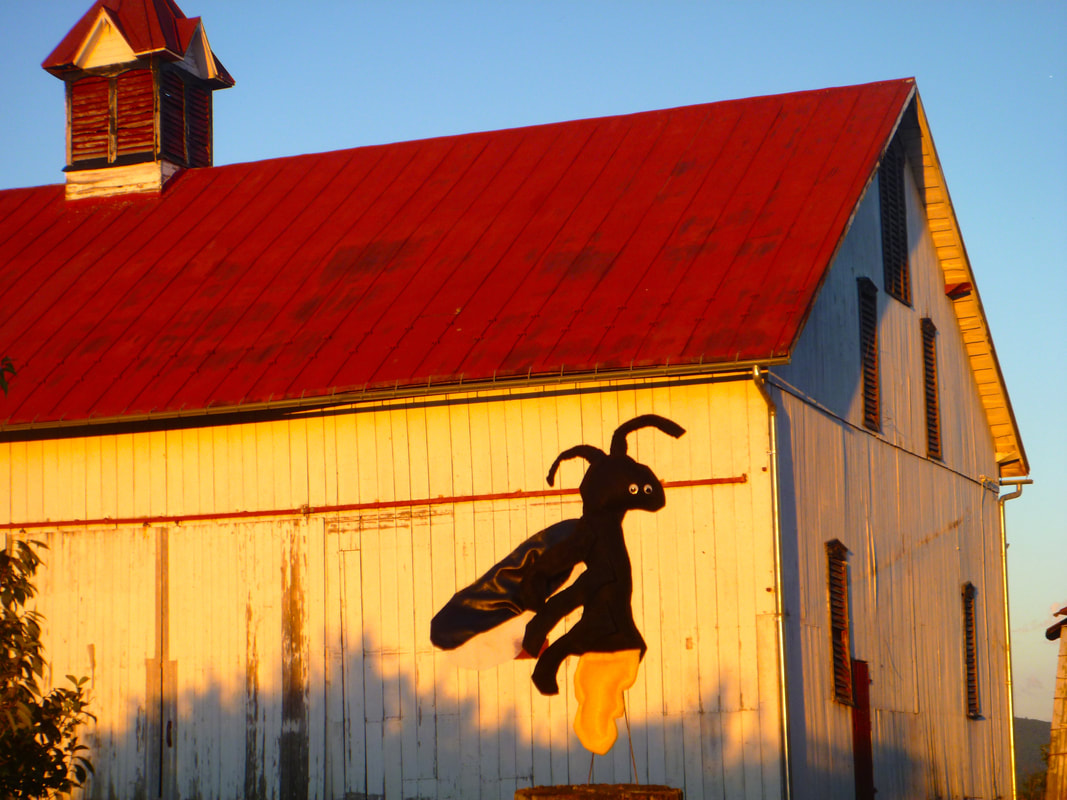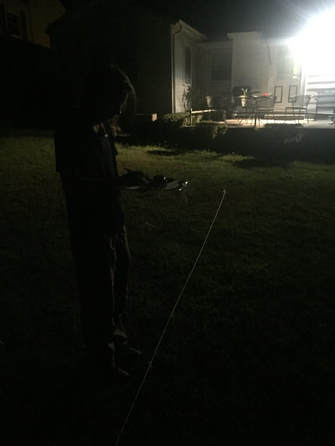Laurels – Summer 2017
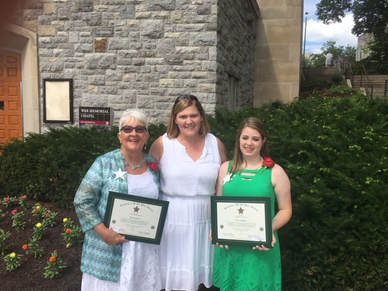 From left to right: Ida Swenson (VMN-Rivanna Chapter, Kim Mayo, Cayla Stephens.
From left to right: Ida Swenson (VMN-Rivanna Chapter, Kim Mayo, Cayla Stephens.
Ida Swenson (VMN-Rivanna Chapter) was inducted as a 4-H All Star on June 21 in Blacksburg, VA. Ida was nominated by Kim Mayo, 4-H Extension Agent for Fluvanna County, for her work as a long time club leader, new Envirothon coach, and consistent volunteer educator in the Fluvanna County Schools.
Sandee Bailey (VMN-Riverine Chapter) received the Land Lover award from Keep Henrico Beautiful for the landscaping she has done on her residential property.
“Just after we bought this run down house and property two years ago, I learned about the Virginia Master Naturalist Program, which entirely changed my prospective on the function of the land I live on,” Bailee said. “The water that flows in my yard eventually goes to the Chesapeake Bay, so I have taken major action to reduce polluted runoff. I also took the master naturalist training to heart and planted Virginia native species, created two rain gardens and installed a native riparian border to reduce runoff and support native pollinators and birds.”
–Sandee Bailey, as quoted in an article by Ashley Luck in the Henrico Citizen
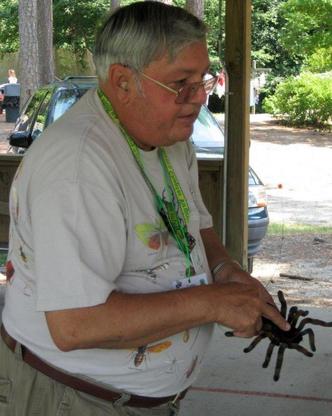 Clyde Marsteller, sharing his enthusiasm for nature.
Clyde Marsteller, sharing his enthusiasm for nature.
Clyde Marsteller, a long-time VMN volunteer in the Historic Rivers and Peninsula Chapters, writes about his naturalist activities on a blog, found at https://clydeccedm.wordpress.com. The blog includes current reflections on nature observations and volunteer activities, anecdotes of influential outdoor experiences he had in childhood and throughout his life, and nature poetry. One of Clyde’s major contributions as a VMN volunteer was his “Zoo in My Shopping Bags” program, in which he used live animals to help youth and adults connect to nature. With help from others in his chapters, the program reached more than 13,000 people!
Many of our other VMN volunteers likely have nature-based blogs, too. Share them with us, and we will compile a list.
The VMN program recognizes volunteers who complete 250, 500, 1000, 2500, 5000, 7500, and 10000 hours of service. These are cumulative volunteer hours starting when a volunteer joins the program. To offer some perspective, a volunteer who does the 40 hours of service annually to maintain status as a Certified Virginia Master Naturalist would take 6-7 years to achieve the 250 hour milestone and 125 years to achieve the 5000 hour milestone!
Below, we have listed the volunteers who have achieved these milestones between January and July 2017 (based on reports received by our chapters as of July 31.) Some of these volunteers have demonstrated long-term dedication through many years with the program. Others have joined the program more recently, but they have done extraordinary levels of service in a short time frame. We are honored to have all of them sharing their time and talents as Virginia Master Naturalist volunteers, and we are pleased to recognize their efforts in this newsletter and with special milestone pins.
|
250 Hours of Service
Jerry Andrews (VMN-Riverine Chapter) Joe Beene (VMN-Historic Rivers Chapter) Hannah Bement (VMN-Shenandoah Chapter) Valerie Bertha (VMN-Fairfax Chapter) Linda Birch (VMN-Rivanna Chapter) Denis Boudreau (VMN-Peninsula Chapter) Bert Browning (VMN-Pocahontas Chapter) Christopher Browning (VMN-Old Rag Chapter) Barbara Bucklin (VMN-Historic Rivers Chapter) Bill Burslem (VMN-Shenandoah Chapter) Mary Camp (VMN-Pocahontas Chapter) Grace Cangialosi (VMN-Old Rag Chapter) Joni Carlson (VMN-Historic Rivers Chapter) Evalyn Chapman (VMN-Southwestern Piedmont Chapter) Shirley Chirch (VMN-Peninsula Chapter) Daphne Cole (VMN-Pocahontas Chapter) Ana Colon (VMN-Peninsula Chapter) Leonard Cowherd (VMN-Old Rag Chapter) Renee Dallman (VMN-Historic Rivers Chapter) Jessica Driver (VMN-Southwestern Piedmont Chapter) Robin Duska (VMN-Fairfax Chapter) Karen Fall (VMN-Shenandoah Chapter) William Gorewich (VMN-Pocahontas Chapter) Beverly Heimbach (VMN-Peninsula Chapter) Becky Holliday (VMN-Peninsula Chapter) Roberta Jalbert (VMN-Old Rag Chapter) Scott Karns (VMN-Roanoke Valley Chapter) Fred Kohlman (VMN-Peninsula Chapter) Claiborne Lange (VMN-Rivanna Chapter) Jeanette LeDuc-Nichols (VMN-Peninsula Chapter) Gail MacFarland (VMN-Roanoke Valley Chapter) Felicia Mason (VMN-Peninsula Chapter) Paul May (VMN-Southwestern Piedmont Chapter) Caroline Meehan (VMN-Riverine Chapter) Deborah Millais (VMN-Old Rag Chapter) Ellen Nuss (VMN-Blue Ridge Foothills and Lakes Chapter) Kris Peckman (VMN-Roanoke Valley Chapter) Michelle Prysby (VMN-Rivanna Chapter) Steve Pullinger (VMN-Rivanna Chapter) Paula Reichardt (VMN-Peninsula Chapter) Janet Rigoni (VMN-Shenandoah Chapter) Paul Kreingold (VMN-Banshee Reeks Chapter) Beth Shatin (VMN-Rivanna Chapter) Alison Sinclair (VMN-Riverine Chapter) Scott Spangler (VMN-Roanoke V alley Chapter) Chris Straub (VMN-Fairfax Chapter) Patricia Taylor (VMN-Roanoke Valley Chapter) Eric Tichay (VMN-Southwestern Piedmont Chapter) Ed Tobias (VMN-Shenandoah Chapter) Helmut Walter (VMN-Peninsula Chapter) Kathleen Warnkey (VMN-Peninsula Chapter) Peppy Winchel (VMN-Rivanna Chapter) Gary Wright (VMN-Peninsula Chapter) |
500 Hours of Service Daniel Beisner (VMN-Old Rag Chapter) Mike Bishop (VMN-Fairfax Chapter) Dale Baker (VMN-Pocahontas Chapter) Bruce Blanton (VMN-Riverine Chapter) Sherry Brubaker (VMN-Historic Rivers Chapter) Brenda Clements Jones (VMN-Old Rag Chapter) Kate Conn (VMN-Pocahontas Chapter) Janet Harper (VMN-Historic Rivers Chapter) Oliver “Hart” Haynes (VMN-Historic Rivers Chapter) Nancy Joel (VMN-Northern Neck Chapter) Alison Keck (VMN-Fairfax Chapter) Frances Lee Vandell (VMN-Rivanna Chapter) Kaycee Lichliter (VMN-Shenandoah Chapter) Sharon Logan (VMN-Riverine Chapter) David Lunt (VMN-Historic Rivers Chapter) Fred Matthies (VMN-Historic Rivers Chapter) Brian Meyerriecks (VMN-Banshee Reeks Chapter) Leslie Middleton (VMN-Rivanna Chapter) Everett Millais (VMN-Old Rag Chapter) Lynn Pritchett (VMN-Southwestern Piedmont Chapter) Donna Reese (VMN-Pocahontas Chapter) Liz Revette (VMN-Pocahontas Chapter) Rebecca Strode (VMN-Fairfax Chapter) Rose Sullivan (VMN-Peninsula Chapter) William Wallace (VMN-Historic Rivers Chapter) Tom Washburn (VMN-Fairfax Chapter) Bill Wood (VMN-Pocahontas Chapter) Rebecca Wood (VMN-Shenandoah Chapter) 1000 Hours of Service 2500 Hours of Service 5000 Hours of Service |
Laurels – Summer 2017 Read Post »

